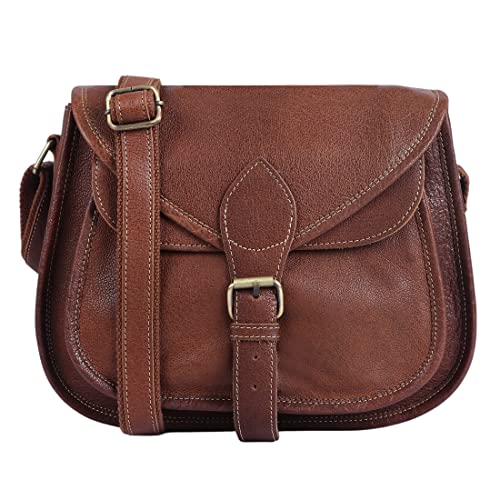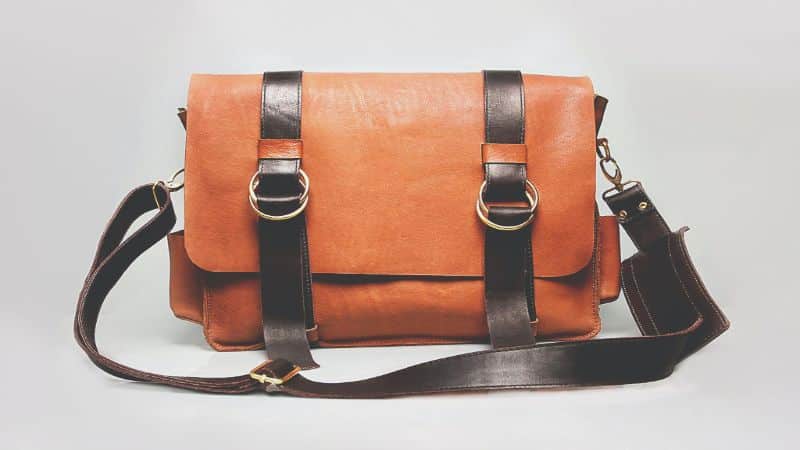Ever wondered when the first handbag swung onto the scene? Well, you’re not alone. The history of handbags is as fascinating as the myriad designs we see today. They’ve been by our side for centuries, evolving from practical pouches to the ultimate fashion statement.

Believe it or not, handbags date back to ancient times. They weren’t always the trendy accessory you know and love, but they’ve always been a crucial part of our daily lives. Let’s take a quick dive into the origins of this indispensable companion.
Ancient Origins of Handbags
Imagine, centuries ago, your ancestors carrying essential items in hand-crafted pouches. Handbags have an extensive history, and they date back to ancient civilizations. Egyptians used them; you can spot handbags in hieroglyphics, clasped in the hands of important figures. These were not just practical items but also status symbols.
In ancient Rome and Greece, both men and women wore belt pouches. These were essential for carrying money and personal items, as clothing seldom had pockets. Remarkably durable and often decorated, they varied in design and significance.
- Egyptians: Status symbols, attached to belts
- Romans & Greeks: For personal belongings, made from leather or cloth
The evolution of handbags was influenced by travel needs. In the Middle Ages, travelers would attach large, leather pouches to their belts. This was a time when handbags were purely functional. Fast forward to the Renaissance, and you’ll find that bags became more intricate and personalized.
During the 17th century, handbags shifted in use and perception. They became smaller, luxurious items meant not just for functionality but also to complement one’s attire. Women would carry small, embroidered bags, indicating wealth and status.
The Industrial Revolution brought another change. With it came mass production, making handbags more accessible. They weren’t just for the elite anymore. Materials became more varied, designs more innovative. The handbag was no longer a simple pouch—it was an essential accessory.
- Middle Ages: Large, leather pouches for travelers
- Renaissance: More intricate, personalized designs
- 17th Century: Smaller, embroidered bags as fashion statements
- Industrial Revolution: Mass production and increased accessibility
As a handbag enthusiast, recognize that what you carry on your shoulder or clasp in your hand is the result of millennia of innovation and social evolution. With each period, the handbag mirrored societal changes, from a practical item to a fashion essential.
Handbags in the Middle Ages
As you delve deeper into the history of handbags, you’ll find the Middle Ages brought significant transformation to these practical items. During the 14th and 15th centuries, handbags were not merely for carrying small items; they played crucial roles in both functionality and fashion.
Initially, both men and women carried what was known as an “alms pouch”, primarily used for carrying coins to give to the poor. Over time, these pouches evolved. Knights would carry a more robust form, known as a girdle pouch, fastened to their belts, keeping essential items like spices, money, and even relics close at hand.
By the late Middle Ages, these girdle pouches became more elaborate. The elite used materials like leather and velvet, often adorned with precious metals or embroidery. Wealth and social status were openly displayed through the intricacies of their handbags, demonstrating how these accessories were interwoven with societal hierarchies.
For women, the development of handbags followed a parallel trend. The emergence of the chatelaine, a series of chains designed to hang from a belt, signified both utility and fashion. Keys, timepieces, and sewing kits dangled aesthetically from the hips of affluent women.
Handbags also served as engagement presents. A groom might present his bride with an elaborately decorated handbag, denoting not just the union but the transfer of wealth and property.
During this period, handbag craftsmanship flourished, reflecting broader cultural shifts. Artisans and craftsmen pushed boundaries with designs, making each handbag uniquely reflective of its owner. Transport yourself back, and imagine an artisan carefully stitching details into a bag that would one day become part of a historical narrative. These artifacts now serve as a window into medieval life, revealing much about the people who once carried them.
The Rise of Handbags in the Renaissance
As you delve deeper into the history of handbags, the Renaissance period marks a significant milestone. During the 16th century, handbags underwent a transformation mirroring the socio-cultural revolution of the era. Art and fashion flourished, much like the renewed interest in classical learning and values.
Handbags, once simple and practical, became status symbols for both men and women. Craftsmen infused innovation and luxury into their designs. Materials such as silk, velvet, and leather were commonly used. The embellishments grew more intricate with the addition of jewels, embroidery, and fine metalwork.
Men’s bags in this period were often attached to a belt and concealed under their clothing for safety, a nod to the less secure times. On the other hand, women’s bags, which were sometimes worn visibly, became more elaborate, reflecting their clothing’s increased opulence.
Scholars’ bags emerged as a new category, designed to carry books and documents. These were particularly favored by the intellectual elite and are considered precursors to modern-day briefcases.
- Functionality met fashion: Pockets were rarely sewn into clothing, which made handbags essential for carrying personal belongings.
- Gifting culture: The tradition of giving handbags as gifts continued, often filled with coins to signify wealth and prosperity.
Though they were still utilized for practical reasons, Renaissance handbags also spoke volumes about an individual’s wealth, social status, and taste. This era set the precedent for the future of handbags as not just utilitarian objects, but works of art and fashion statements. The evolution during the Renaissance laid the groundwork for the diverse range of handbags you see in today’s market.
Handbags in the Victorian Era
« Can Handbags Be Recycled? Find Out How Your Fashion Choices Impact the Planet
Who Makes Handbags? Unveiling the Masters of Craftsmanship »
The advent of the Victorian era saw handbags taking on new forms and functions. As society evolved, so did the roles and accessories of women, with handbags standing at the forefront of this fashion revolution. You’d notice that women’s bags grew increasingly ornate, coinciding with the period’s penchant for detail and decorum. Velvet, silk, and leather became popular materials, often adorned with lace, beads, and embroidery.
Chatelaines, a form of bag or pouch attached to a belt, became immensely popular among Victorian women. They weren’t just mere fashion statements but essential for carrying everyday items like keys, watches, sewing kits, and small notebooks. As you dive deeper into Victorian handbag history, you’ll discover the clever integration of practicality and elegance.
Traveling during this time became more common, which spurred the introduction of large travel bags known as carpet bags. They were sturdy, reliable, and made, quite literally, from carpets. Bags like these were paramount in the lives of travelers, showing off both functionality and fashion sense. They often featured intricate patterns and were considered a staple for any journey.
The mid-to-late Victorian period saw the rise of reticules, small hand-held bags that were the precursor to the modern purse. These dainty bags were designed to carry the essentials and were typically used for social occasions. Reticules exemplified the delicate balance between utility and ornamentation during this time, shaping the trajectory for future handbag design.
In this period, you’d find that handbags were not just part of a woman’s wardrobe; they were indicative of her identity and social standing. Affluent women had handbags embellished with precious metals and jewels, signifying their wealth and position. The intricate designs and elaborate materials of Victorian era handbags set the stage for the luxurious handbag market you’re familiar with today.
Handbags as Fashion Statements
As you delve deeper into the history of handbags, you’ll notice a pivotal shift. Moving past the Victorian era, the 20th century marked a new dawn for handbags—they weren’t just for carrying essentials anymore. They became fashion statements. Iconic design houses like Chanel and Louis Vuitton emerged, forever changing how we view handbags.
The Roaring Twenties and Beyond
In the 1920s, flappers danced their way into popular culture, clutching sleek, embellished pochettes. These weren’t just bags; they were a rebellion against the old, a symbol of new-found freedom and femininity. As time pressed on, handbags kept pace with fashion’s ever-quickening pulse.
- 1940s: Post-war functionality led to larger, sturdier bags.
- 1950s: A surge in consumerism brought a wider variety of styles.
- 1960s-1970s: Youth culture demanded innovation—think bright colors, unconventional shapes, and materials like PVC.
With each decade, designers pushed boundaries, and handbags reflected the societal changes. Names like Hermès and Dior began to resonate with luxury and high fashion.
Modernity and Designer Influence
Fast forward to the present, and you’ll find that handbags are as much about design as they are about branding. A luxury handbag from a famed fashion house isn’t just a purchase; it’s an investment. Owning a piece from Prada or Gucci isn’t simply about the item itself—it’s about the statement it makes, the identity it confers, and the slice of fashion history it represents.
The handbag has evolved into an indispensable accessory in the fashion world, serving multiple roles—art piece, status symbol, and an expression of personal style. Celebrity endorsements and limited edition collections stir up excitement, creating a constantly evolving narrative where style meets utility.
So, as you consider your next handbag acquisition, remember you’re not just picking out a place to stash your wallet and keys. You’re selecting a piece of history, a statement that may just define an era.
Conclusion
You’ve journeyed through the rich tapestry of handbag history, witnessing their transformation from practical pouches to symbols of fashion and status. It’s clear that the handbag is more than just an accessory; it’s a reflection of cultural shifts and a personal statement piece. Whether you’re drawn to the vintage charm of a Victorian reticule or the modern allure of a designer tote, your choice in handbag is a nod to a legacy that spans centuries. Cherish your handbags, for each one carries a piece of history and a touch of your own identity.
Frequently Asked Questions
What is the history of handbags?
Handbags originated centuries ago but saw significant design evolution during the Victorian era, where they served both practical purposes and as fashion statements, often indicating a woman’s social status.
What were some popular handbag styles in the Victorian era?
During the Victorian era, popular handbag styles included chatelaines, carpet bags, and reticules, each designed for specific functions and social occasions.
How did handbags symbolize a woman’s identity?
Handbags symbolized a woman’s identity by reflecting her social standing and personal style. Affluent women often carried bags adorned with precious metals and jewels.
Which design houses became iconic for handbags in the 20th century?
Iconic design houses that emerged in the 20th century, known for their handbag designs, include Chanel and Louis Vuitton.
What did pochettes symbolize in the Roaring Twenties?
Pochettes in the Roaring Twenties symbolized rebellion and freedom, aligning with the sleek, embellished fashion trends of that vibrant era.
How do handbag styles reflect societal changes?
Handbag styles often change to reflect societal shifts, including the roles of women, fashion trends, and the influence of well-known designers throughout the decades.
Why is owning a luxury handbag considered an investment?
Owning a luxury handbag is considered an investment in fashion history because it represents an enduring accessory that combines function, art, and status, often retaining or increasing in value over time.








